Chevrolet Equinox Service Manual: Tire and Wheel Assembly Balancing - Off Vehicle
Warning:Failure to adhere to the following precautions before tirebalancing can result in personal injury or damage tocomponents:
Clean away any dirt or deposits from the inside of thewheels.Remove any stones from the tread.Wear eye protection.Use coated weights on aluminum wheels.Tire and Wheel Assembly Balancer CalibrationTire and wheel balancers can drift out of calibration over time, or can become inaccurateas a result of heavy use. There will likely not be any visual evidence that a calibrationproblem exists. If a balancer is not calibrated within specifications, and a tireand wheel assembly is balanced on that machine, the assembly may actually be imbalanced.
Tire and wheel assembly balancer calibration should be checked approximately every2-weeks, if the machine is used frequently, and/or whenever the balance readings arequestionable.
Tire and Wheel Assembly Balancer Calibration TestNote:If the balancer fails any of the steps in this calibration test, the balancer shouldbe calibrated according to the manufacturer's instructions. If the balancer cannotbe calibrated, contact the manufacturer for assistance.
Inspect the calibration of the tire and wheel assembly balancer according to the manufacturer'srecommendations, or perform the following test.
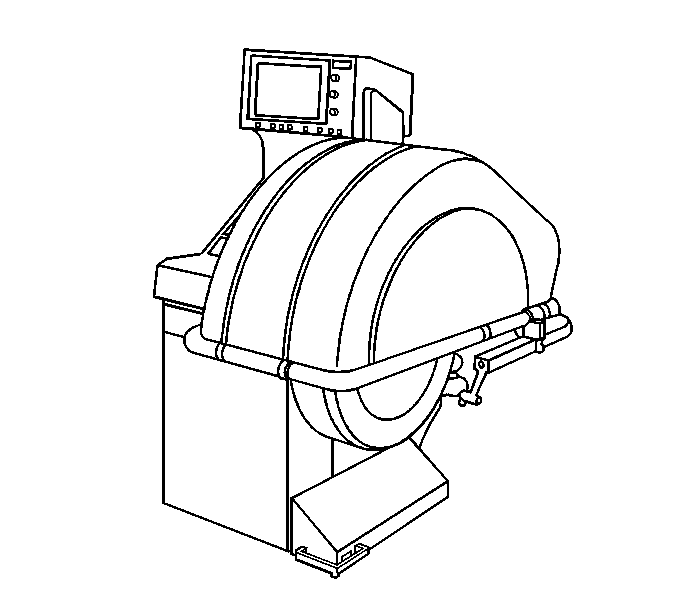
Spin the balancer without a wheel or any of the adapters on the shaft.Inspect the balancer readings.
Specification
Zero-within-7-g (¼-oz)If the balancer is within the specification range, balance a tire and wheel assembly– that is within radial and lateral runout tolerances – to ZERO, using the same balancer.After the tire and wheel assembly has been balanced, add an 85-g (3-oz) test weightto the wheel at any location.Spin the tire and wheel assembly again. Note the readings.In the static and dynamic modes, the balancer should call for 85-g (3-oz) of weight,180-degrees opposite the test weight.In the dynamic mode, the weight should be called for on the flange of the wheel oppositethe test weight.With the assembly imbalanced to 85-g (3-oz), cycle the balancer 5-times.Inspect the balancer readings:
Specification
Maximum variation: 7-g (¼-oz)Index the tire and wheel assembly on the balancer shaft, 90-degrees from the previouslocation.Cycle the balancer with the assembly at the new location.Inspect the balancer readings:
Specification
Maximum variation: 7-g (¼-oz)Repeat steps 8-through-10 until the tire and wheel assembly has been cycled and checkedat each of the 4-locations on the balancer shaft.Tire and Wheel Assembly Balancing Guidelines
Note:Tire and wheel assemblies which exhibit excessive runout can produce vibrations evenif the assemblies are balanced.
It is strongly recommended that the tire and wheel assembly runout be measured andcorrected if necessary BEFORE the assemblies are balanced.
If the runout of the tire and wheel assemblies has not yet been measured, refer toTire and Wheel Assembly Runout Measurement - Off Vehiclebefore proceeding.
There are 2-types of tire and wheel balance:
Static Balance
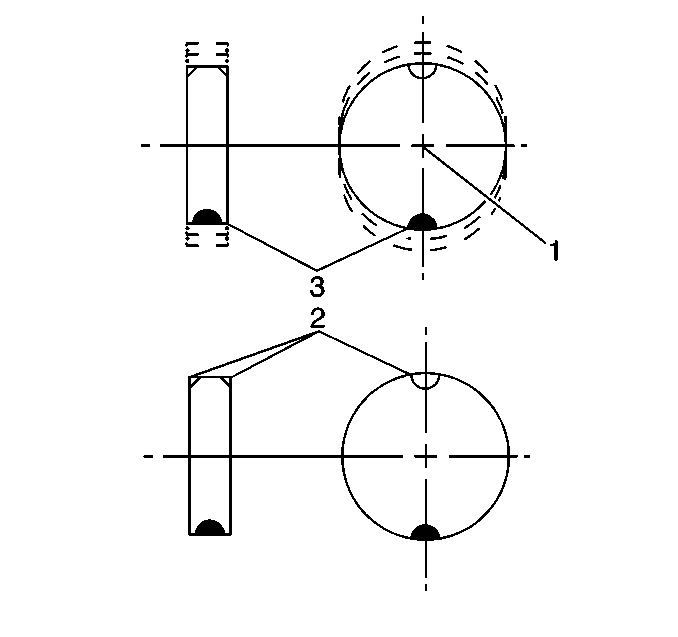
Static balance is the equal distribution of weight around the wheel circumference.The wheel balance weights-(2) are positioned on the wheel in order to offset the effectsof a heavy spot-(3). Wheels that have static imbalance can produce a bouncing actioncalled tramp.
Dynamic Balance
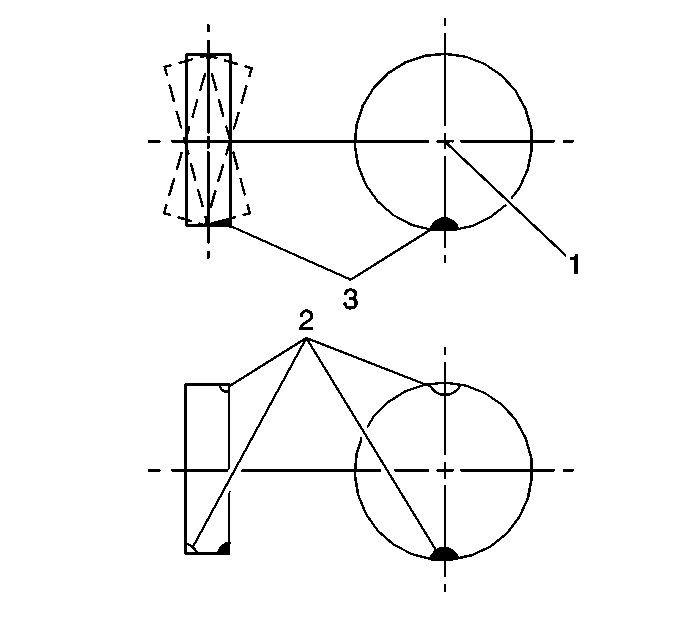
Dynamic balance is the equal distribution of weight on each side of the tire and wheelassembly centerline. The wheel balance weights-(2) are positioned on the wheel inorder to offset the effects of a heavy spot-(3). Wheels that have dynamic imbalancehave a tendency to move from side to side and can cause an action called shimmy.
Most off-vehicle balancers are capable of checking both types of balance simultaneously.
As a general rule, most vehicles are more sensitive to static imbalance than to dynamicimbalance; however, vehicles equipped with low profile, wide tread path, high performancetires and wheels are susceptible to small amounts of dynamic imbalance. As littleas 14–21-g (½–¾-oz) imbalance is capable of inducing a vibration in some vehicle models.
Balancing ProcedureNote:When balancing tire and wheel assemblies, use a known good, recently calibrated, off-vehicle,two-plane dynamic balancer set to the finest balance mode available.
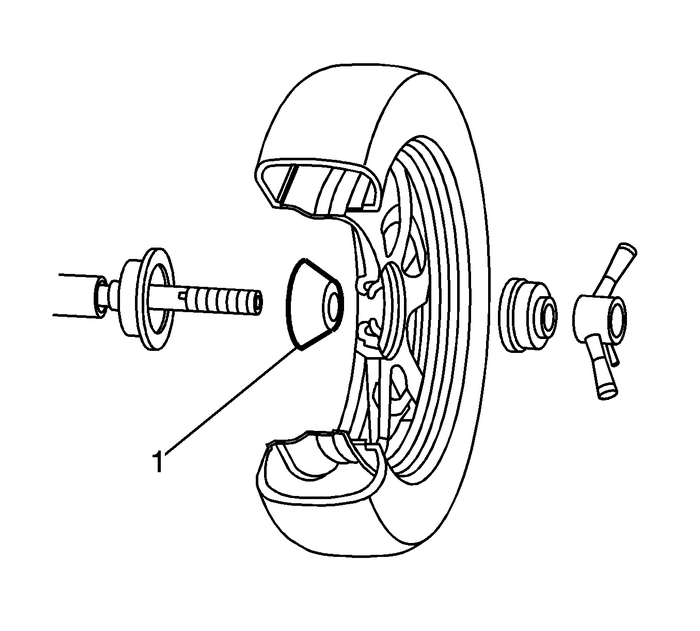
Note:Carefully follow the wheel balancer manufacturers’s instructions for proper mountingof the center cone (1).
Raise and support the vehicle. Refer toLifting and Jacking the Vehicle.Mark the location of the wheels to the wheel studs and mark the specific vehicle positionon each tire and wheel – LF, LR, RF, RR.Remove the tire and wheel assemblies one at a time and mount on a spin-type wheelbalancer. Refer toTire and Wheel Removal and Installation.Carefully follow the wheel balancer manufacturer's instructions for proper mountingtechniques to be used on different types of wheels.Regard aftermarket wheels, especially those incorporating universal lug patterns,as potential sources of runout and mounting concerns.
Be sure to use the correct type of wheel balance weights for the type of wheel rimbeing balanced. Be sure to use the correct type of coated wheel balance weights onaluminum wheels. Refer to Wheel Weight Usage.Balance all four tire and wheel assemblies as close to zero as possible.Using the matchmarks made prior to removal, install the tire and wheel assembliesto the vehicle. Refer toTire and Wheel Removal and Installation.Lower the vehicle.Wheel Weight UsageTire and wheel assemblies can be balanced using either the static or dynamic method.
Clip-on Weights
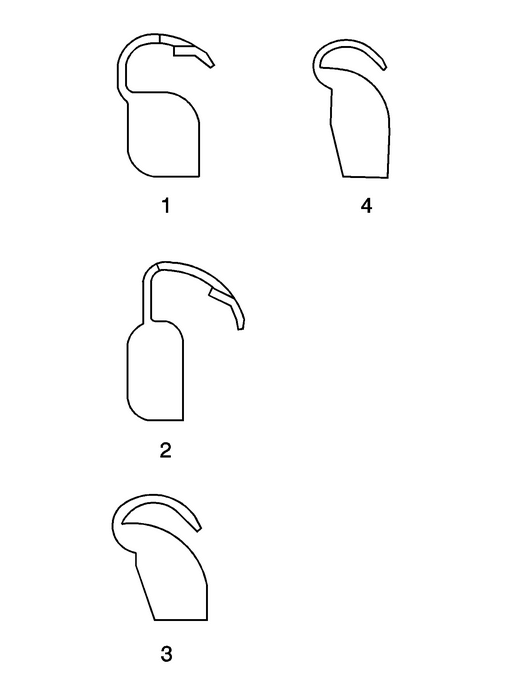
Note:When balancing factory aluminum wheels with clip-on wheel balance weights, be sureto use special polyester-coated weights. These coated weights reduce the potentialfor corrosion and damage to aluminum wheels.
These coated weights reduce the potential for corrosion and damage to aluminum wheels.
MC-(1) and AW-(2) series weights are approved for use on aluminum wheels.P-(3) series weights are approved for use on steel wheels only.T-(4) series coated weights are approved for use on both steel and aluminum wheels.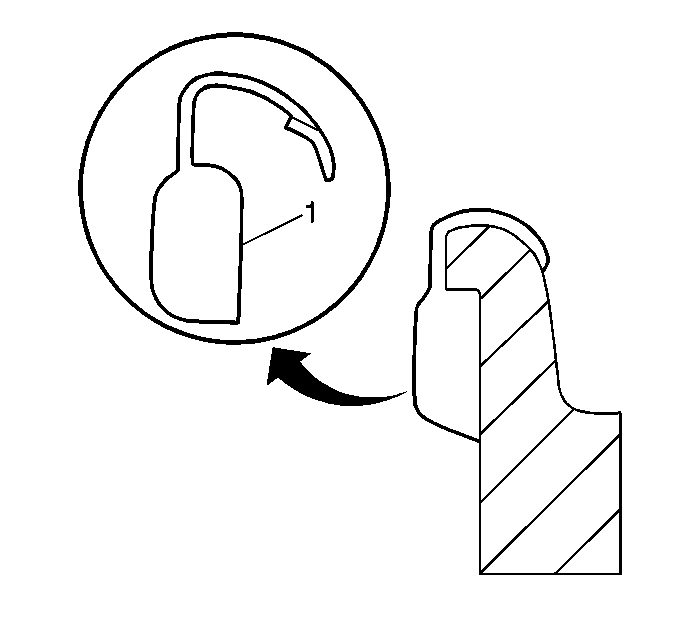
Note:Use a nylon or plastic-tipped hammer when installing coated clip-on wheel balanceweights to minimize the possibility of damage to the polyester coating.
The contour and style of the wheel rim flange will determine which type of clip-onwheel weight-(1) should be used. The weight should follow the contour of the rim flange.The weight clip should firmly grip the rim flange.
Wheel Weight Placement – Clip-on Weights
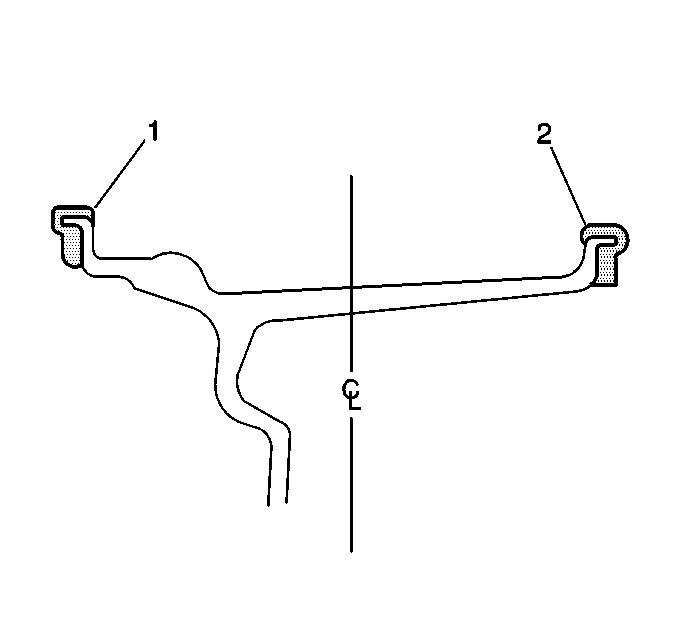
When static balancing, locate the wheel balance weights on the inboard flange-(2)if only 28-g (1-oz) or less is called for. If more than 28-g (1-oz) is called for,split the weights as equally as possible between the inboard-(2) and outboard-(1)flanges.
When dynamic balancing, locate the wheel balance weights on the inboard-(2) and outboard-(1)rim flanges at the positions specified by the wheel balancer.
Adhesive Weights
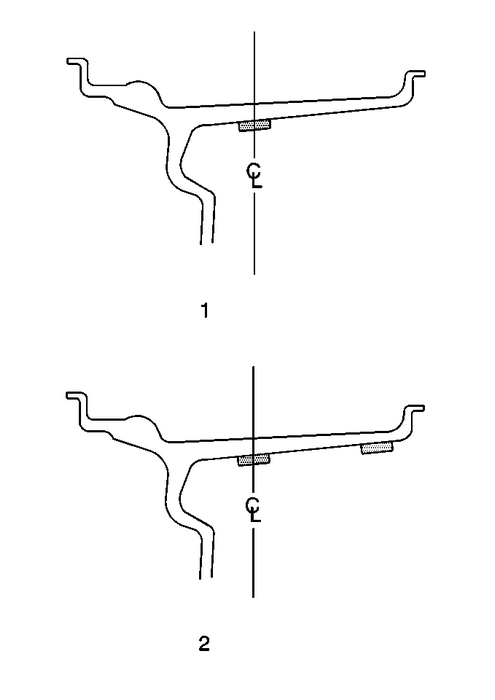
Note:When installing adhesive balance weights on flangeless wheels, do NOT install theweight on the outboard surface of the rim.
Adhesive wheel balance weights may be used on factory aluminum wheels. Perform thefollowing procedure to install adhesive wheel balance weights.
Determine the correct areas for placement of the wheel weights on the wheel.When static balancing, locate the wheel balance weights along the wheel centerline-(1)on the inner wheel surface if only 28-g (1-oz) or less is called for. If more than28-g (1-oz) is called for, split the weights as equally as possible between the wheelcenterline and the inboard edge of the inner wheel surface-(2).When dynamic balancing, locate the wheel balance weights along the wheel centerlineand the inboard edge of the inner wheel surface-(2) at the positions specified bythe wheel balancer.Ensure that there is sufficient clearance between the wheel weights and brake systemcomponents.Note:Do not use abrasives to clean any surface of the wheel.
Using a clean cloth or paper towel with a general purpose cleaner, thoroughly cleanthe designated balance weight attachment areas of any corrosion, overspray, dirt orany other foreign material.To ensure there is no remaining residue, wipe the balance weight attachment areasagain, using a clean cloth or paper towel with a mixture of half isopropyl alcoholand half water.Dry the attachment areas with hot air until the wheel surface is warm to the touch.Warm the adhesive backing on the wheel balance weights to room temperature.Remove the protective covering from the adhesive backing on the back of the balanceweights. DO NOT touch the adhesive surface.Apply the wheel balance weights to the wheel, press into place with hand pressure.Secure the wheel balance weights to the wheel with a 90-N (21-lb) force applied witha roller. Parking Brake and Drive Wheels Warning Wheels
Parking Brake and Drive Wheels Warning Wheels
Warning:Apply the parking brake and block the drive wheels beforeperforming this procedure in order to prevent bodily injury. ...
 Tire Repair Wheels
Tire Repair Wheels
Warning:Tire changing can be dangerous and should be done by trainedprofessionals using proper tools and procedures. Always read andunderstand any manufacturer's warnings contained in their customersl ...
Other materials:
Transfer Case Disassemble 4WD Transfer Case
Table 1: Housing O-Ring, Vent Assembly, Drain and Fill Plug RemovalTable 2: Intermediate Drive Shaft RemovalTable 3: Rear Output Shaft Housing RemovalTable 4: Right Transfer Case, Input and Output Drive Shaft RemovalTable 5: Rear Output Shaft Housing DisassemblyTable 6: Intermediate Drive Shaft Disa ...
